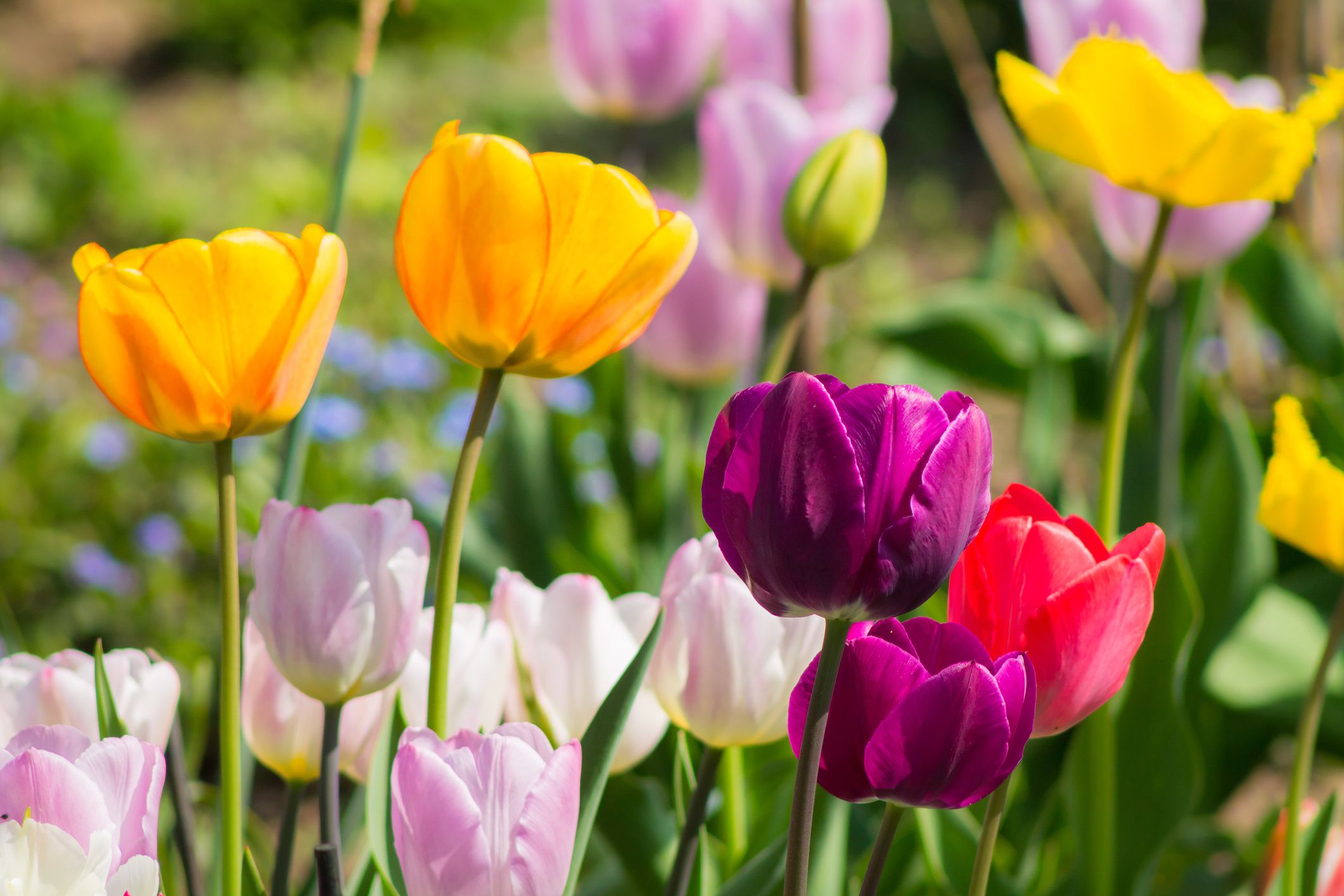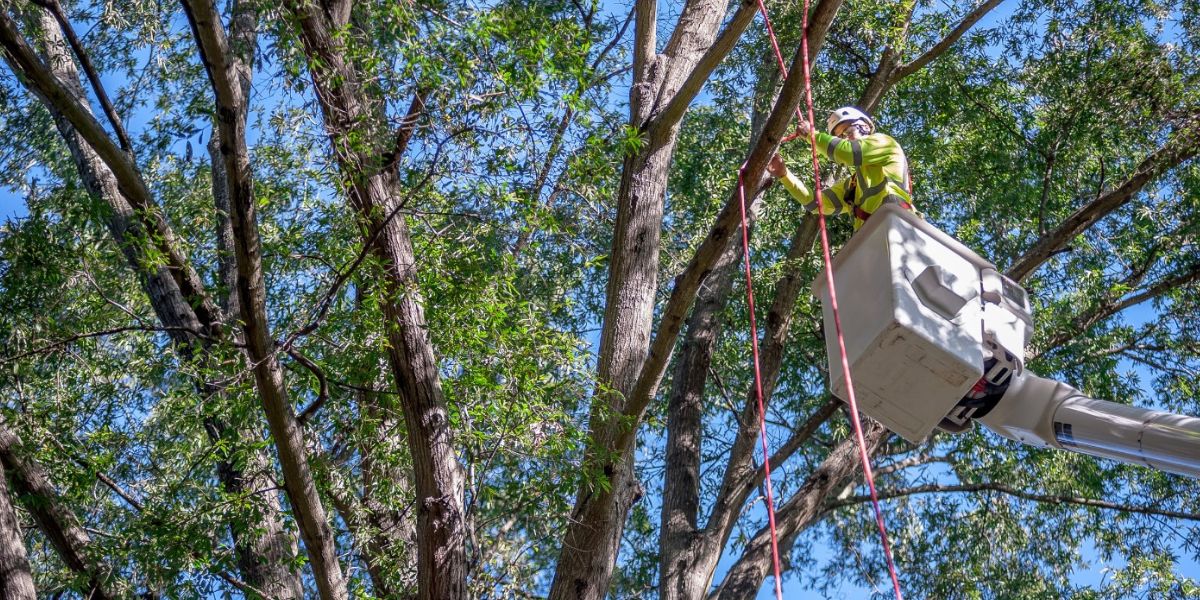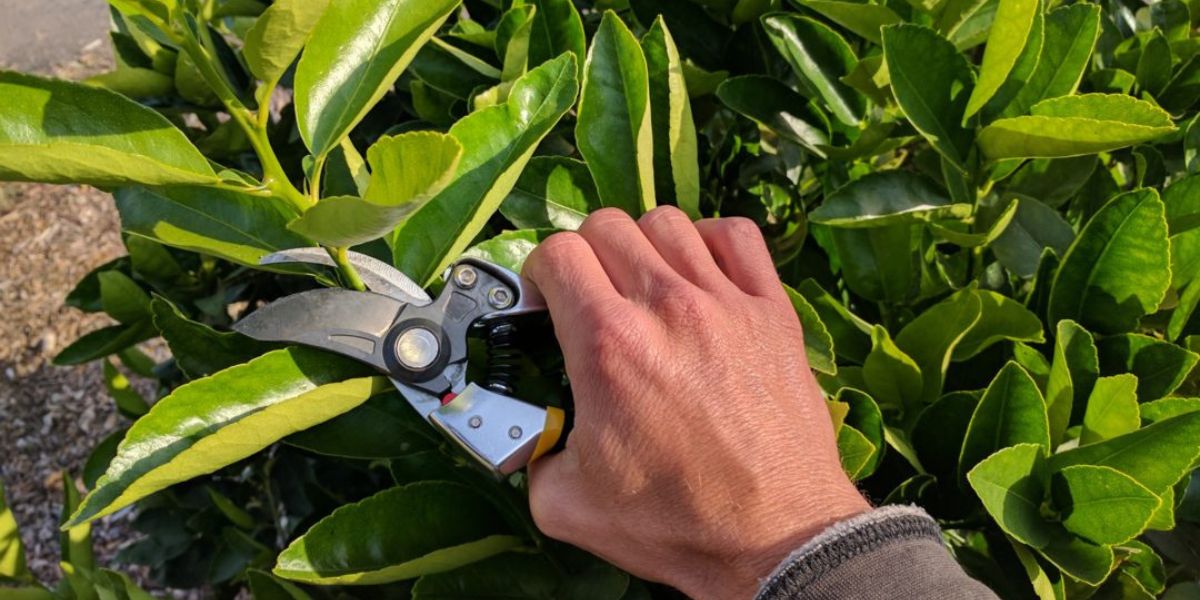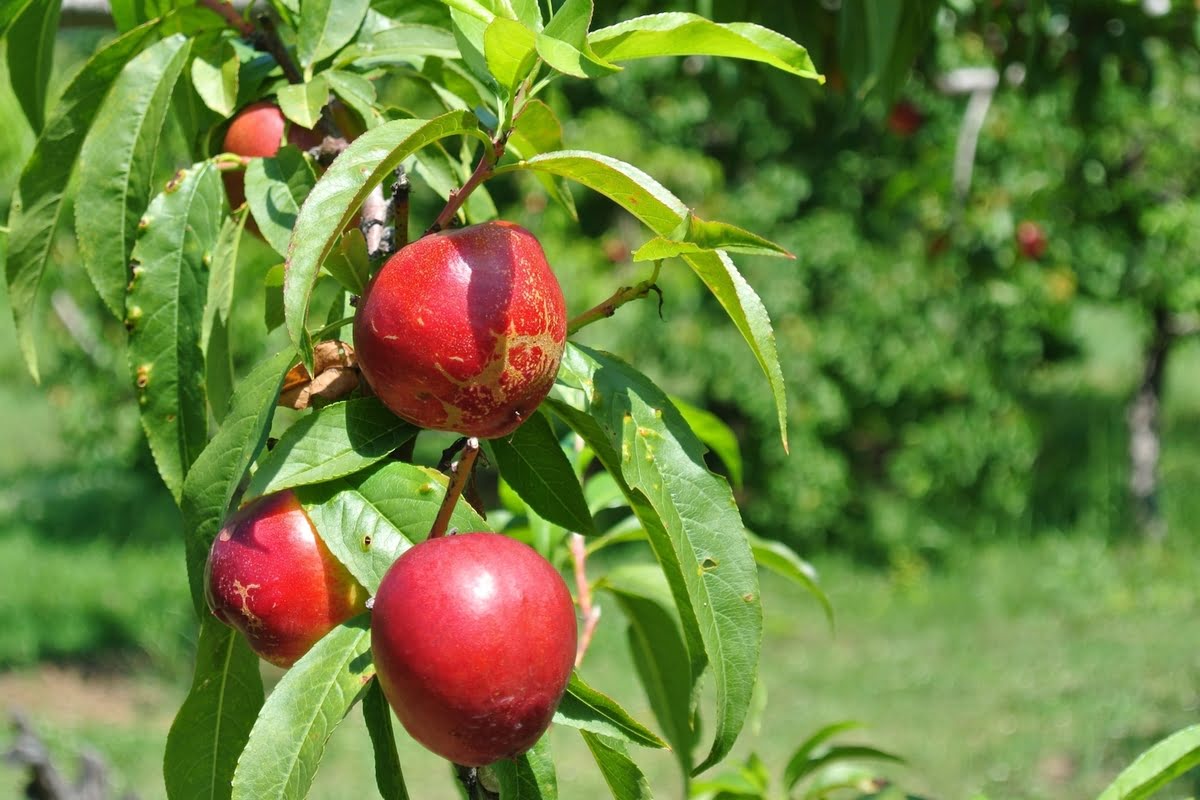Home>Gardening Techniques>Plant Care>What Does Pruning Trees Mean
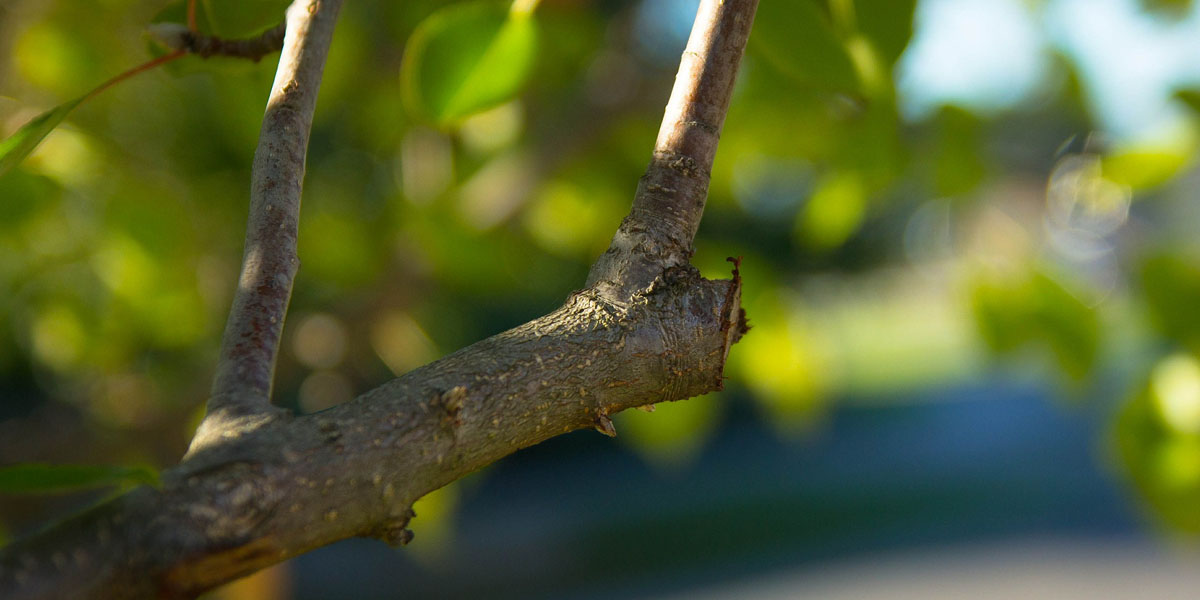

Plant Care
What Does Pruning Trees Mean
Modified: January 22, 2024
Learn about the meaning of tree pruning and its importance in plant care. Discover the benefits of pruning and how it enhances the health and appearance of your trees.
(Many of the links in this article redirect to a specific reviewed product. Your purchase of these products through affiliate links helps to generate commission for Chicagolandgardening.com, at no extra cost. Learn more)
Table of Contents
Introduction
Welcome to the world of plant care! Whether you have a small garden, a backyard, or a lush green landscape, taking care of your trees is essential to ensure their health and longevity. One key aspect of tree care is pruning. Pruning trees involves the selective removal of branches or parts of a tree to promote growth, enhance its shape, and maintain its overall well-being.
As a plant lover, you may wonder what exactly pruning entails and why it is necessary. In this article, we will delve into the world of tree pruning, exploring its definition, the reasons behind it, its benefits, and the techniques used. Additionally, we will discuss when to prune trees and the tools and safety measures involved in the process.
Pruning trees is not just about trimming branches; it is a careful and intentional practice that requires knowledge and skill. By understanding the importance of pruning and the techniques involved, you can ensure that your trees are thriving and add beauty to your surroundings.
So, whether you are a seasoned gardener looking to refine your pruning skills or a plant enthusiast eager to learn more about tree care, this article will guide you through the fascinating world of pruning trees. Let’s dive in!
Definition of Tree Pruning
Tree pruning is the strategic practice of selectively removing specific branches or parts of a tree to achieve desired outcomes. It involves the careful removal of dead, damaged, or diseased branches, as well as the shaping and training of young trees to encourage proper growth and structure.
Pruning is not to be confused with trimming, which typically involves the removal of overgrown or unwanted branches without regard to the tree’s overall health or future growth. Pruning, on the other hand, is a more deliberate and precise process aimed at improving the overall well-being and appearance of the tree.
One of the key goals of tree pruning is to maintain the natural form and shape of the tree. This is achieved by selectively removing branches that are crossing or rubbing against each other, competing for sunlight, or causing imbalance in the tree’s structure. By eliminating these branches, pruning promotes a healthier tree with a more balanced canopy.
Another important aspect of pruning is the removal of dead, damaged, or diseased branches. Dead branches not only detract from the tree’s aesthetics, but they also pose a safety risk as they can fall off unexpectedly. Removing them not only improves the appearance of the tree but also prevents potential hazards.
Furthermore, pruning also plays a vital role in improving air circulation and sunlight penetration within the tree’s canopy. By selectively thinning out branches, it allows for better airflow, reducing the risk of fungal infections and promoting the overall health of the tree. Additionally, increased sunlight exposure to lower branches stimulates growth and improves fruit production in fruit-bearing trees.
In essence, tree pruning is a meticulous and purposeful practice that aims to enhance the health, structure, and aesthetics of trees. By selectively removing branches and promoting proper growth, pruning helps to maintain the natural form, prevent potential hazards, and maximize the overall well-being of the tree.
Reasons for Pruning Trees
Pruning trees serves several important purposes. Understanding these reasons will help you prioritize and approach tree pruning in a more informed and effective manner.
1. Promoting tree health: Pruning is essential for maintaining the health of trees. By removing dead, dying, or diseased branches, you can prevent the spread of infections and diseases to the rest of the tree. Additionally, eliminating branches that are competing for resources, such as sunlight and water, allows the tree to allocate its resources more effectively and thrive.
2. Enhancing safety: The removal of hazardous branches is another crucial reason for pruning trees. Dead or damaged branches are prone to falling, especially during storms or high winds, posing a risk to people, property, and other plants. Regular pruning ensures that these potential hazards are minimized, providing a safer environment.
3. Improving aesthetics: Pruning can greatly improve the overall appearance and shape of trees. By selectively removing branches that are crossing, rubbing, or growing in an undesirable direction, you can create a more balanced and visually appealing tree structure. Pruning can also rejuvenate older trees and stimulate new growth, resulting in a healthier and more vibrant appearance.
4. Increasing sunlight and air circulation: Proper pruning allows for better sunlight penetration and air circulation within the tree’s canopy. This is particularly important for fruit-bearing trees, as increased sunlight exposure to lower branches promotes optimal fruit development and ripening. Improved air circulation helps prevent fungal diseases by reducing moisture buildup and improving the overall health of the tree.
5. Managing tree size: Pruning can be used to manage and control the size of a tree. By selectively removing branches, you can shape the tree according to your desired height and spread. This is especially useful in urban settings where space is limited, preventing trees from encroaching on buildings, power lines, or other structures.
When it comes to pruning trees, it is important to have a clear understanding of the reasons behind the practice. By addressing tree health, safety concerns, aesthetics, sunlight exposure, and size management, pruning plays a vital role in maintaining the overall well-being and longevity of trees.
Benefits of Pruning Trees
Pruning trees not only contributes to the overall health and appearance of trees but also offers a range of benefits that positively impact the surrounding environment and the people who enjoy them. Let’s explore some key benefits of tree pruning:
1. Improved tree structure: Pruning helps in shaping and developing a strong tree structure. By selectively removing weak, crossing, or damaged branches, you enhance the tree’s overall stability, reducing the risk of breakage or uprooting during storms or high winds.
2. Enhanced air circulation and sunlight penetration: Pruning facilitates better air movement within the tree’s canopy, reducing the likelihood of fungal diseases caused by stagnant air and excess moisture. Opening up the canopy also allows more sunlight to reach lower branches and the ground, benefiting the flora and fauna underneath.
3. Promoted fruit production: Fruit-bearing trees benefit greatly from pruning. By removing overcrowded or diseased branches, you provide more space and resources for the development of healthy fruit. Pruning also stimulates the growth of new branches, increasing the overall yield and quality of the harvest.
4. Improved aesthetics: Pruning enhances the visual appeal of trees and landscapes. It allows you to shape trees according to your preferences while maintaining their natural form. Well-pruned trees create an inviting and aesthetically pleasing environment, enhancing the overall beauty of your property.
5. Prevention of hazards: Regular pruning reduces the risk of falling branches, which can cause property damage or injuries. Removing dead, dying, or weak branches minimizes the chances of accidents, making the surrounding area safer for people, animals, and structures.
6. Longer tree lifespan: Proper pruning practices help trees to thrive and live longer. By removing unhealthy or diseased branches and promoting better structure, pruning extends the lifespan of trees. It also helps young trees establish a robust framework, setting them up for healthy growth and a long future.
7. Enhanced property value: Well-maintained and pruned trees add value to your property. They improve curb appeal, create a pleasant outdoor environment, and contribute to a positive perception of your property by potential buyers or visitors.
Overall, the benefits of pruning trees extend far beyond the health and appearance of the trees themselves. Pruning contributes to a safer environment, improved aesthetics, increased fruit production, and enhanced property value. Investing time and effort into regular pruning practices yields rewards that are both visual and functional, ensuring that trees remain healthy, beautiful, and in harmony with their surroundings.
Different Types of Tree Pruning Techniques
Tree pruning involves various techniques, each serving a specific purpose. Understanding these techniques will help you determine the appropriate method for your specific pruning goals. Here are some common types of tree pruning:
1. Crown Cleaning: This pruning technique involves the removal of dead, diseased, or damaged branches from the tree’s crown. Crown cleaning improves the overall health of the tree, reduces the risk of branch failure, and enhances its aesthetic appearance.
2. Crown Thinning: Crown thinning is the selective removal of branches within the tree’s canopy to allow better airflow and sunlight penetration. It involves removing selective branches evenly throughout the crown to maintain the tree’s natural shape while reducing weight and improving tree structure.
3. Crown Raising: Crown raising involves the removal of lower branches to increase ground clearance. This technique is useful for creating clearance for pedestrians, vehicles, or buildings, and improving the view and accessibility within the area.
4. Crown Reduction: Crown reduction is a pruning technique used to reduce the size and spread of the tree’s crown. It involves the selective removal of branches to maintain the overall shape and structural integrity of the tree while reducing its height and size.
5. Vista Pruning: Vista pruning is a technique used to enhance scenic views. It involves the selective pruning of specific branches or portions of the tree to create an unobstructed view without compromising the health and structure of the tree.
6. Formative Pruning: Formative pruning is primarily done on young trees to shape and train them for proper growth. It involves the removal of competing branches and correcting structural defects to establish a strong framework early on.
7. Rejuvenation Pruning: Rejuvenation pruning is typically done on older trees to stimulate new growth. It involves the more drastic removal of branches, often cutting the tree back to its main stem or major branches. This technique rejuvenates the tree, promoting the growth of new, healthier branches.
It is important to note that each pruning technique requires careful consideration and knowledge of the tree species, growth habits, and specific goals. Consulting with a professional arborist or tree care specialist can help ensure that the appropriate pruning technique is applied, resulting in healthy, well-structured, and aesthetically pleasing trees.
When to Prune Trees
Timing is crucial when it comes to pruning trees. Pruning at the right time ensures optimal results and minimizes potential harm to the tree. The timing of pruning can vary depending on the species of tree, the specific pruning goals, and the local climate. Here are some general guidelines for when to prune trees:
1. Winter Pruning: Many deciduous trees can be pruned during the dormant winter season when they have shed their leaves. This allows better visibility of the tree’s structure and enables pruning decisions to be made more effectively. Winter pruning is ideal for corrective pruning, crown thinning, and crown raising.
2. Spring Pruning: Spring is a common time for pruning, especially for flowering trees and shrubs. Pruning after the winter dormancy period stimulates new growth and promotes blooming. It is important to prune early in the spring before the tree begins to flower or leaf out. Spring pruning is suitable for formative pruning, crown reduction, and rejuvenation pruning.
3. Summer Pruning: Summer pruning is best reserved for specific purposes, such as the removal of water sprouts (vigorous vertical shoots) or suckers (shoots arising from the tree’s root system), which can sap energy from the tree. It can also be done to improve light penetration or to shape branches that are obstructing walkways or structures.
4. Fall Pruning: Fall pruning is generally not recommended for most tree species as it can stimulate new growth that may not have sufficient time to harden off before winter. However, minor pruning, such as the removal of dead or damaged branches, can be done during early fall. It is crucial to avoid heavy pruning at this time to prevent winter damage.
While these are general guidelines, it is important to consider the specific needs and characteristics of the tree. Some trees may have specific pruning requirements that differ from the typical recommendations. Consulting an arborist or tree care professional can help determine the best time to prune based on the specific species, climate, and desired pruning outcomes.
Remember, regardless of the season, it is important to avoid pruning during times of extreme heat or drought, as this can stress the tree. Additionally, trees that bloom on old wood (those that flower before or alongside new leaves emerge) should be pruned immediately after flowering to prevent disrupting the next season’s bloom.
By pruning at the proper time, you can encourage healthy growth, maintain the desired shape and structure of the tree, and minimize the potential for disease or damage.
Tools and Techniques for Pruning Trees
Pruning trees requires the use of the right tools and techniques to ensure efficient and effective results. Here are some essential tools and techniques commonly used for tree pruning:
1. Pruning Tools: The following tools are commonly used for tree pruning:
- Pruning Shears: Also known as hand pruners or secateurs, these are used to cut small branches and twigs up to ¾ inch in diameter.
- Loppers: These are similar to pruning shears but have long handles for cutting thicker branches, typically up to 2 inches in diameter.
- Pole Pruners: These consist of a saw or lopper on an extendable pole, allowing you to reach and cut higher branches without needing a ladder.
- Pruning Saw: A pruning saw has a curved or straight blade designed to cut larger branches, typically over 2 inches in diameter.
- Chainsaw: Chainsaws are used for heavy-duty pruning tasks, such as the removal of large branches or entire trees. It is important to have proper training and safety precautions when operating a chainsaw.
2. Pruning Techniques: The following techniques are commonly used during tree pruning:
- Three-Cut Method: For larger branches, it is recommended to use the three-cut method to prevent bark tearing. Make an undercut about one foot away from the trunk, followed by a final cut slightly outside the branch collar.
- Heading Back: Heading back involves shortening the length of branches to encourage new growth. This technique is commonly used for maintaining tree size or shaping hedges.
- Thinning: Thinning involves selectively removing branches to improve airflow and light penetration within the tree’s canopy. It helps reduce weight and allows space for healthier growth.
- Directional Pruning: Directional pruning directs the growth of the tree by selectively removing branches that are growing in undesirable directions, such as toward structures or power lines.
- Stub Removal: Removing stubs left from previous pruning helps prevent decay and disease by promoting proper healing and growth at the pruning site.
When pruning trees, it is essential to follow proper pruning techniques and use the appropriate tools for the task at hand. It is also important to prioritize safety by wearing protective gear, such as gloves, safety glasses, and ear protection, and ensuring that ladders and other equipment are secure and stable.
If you are unsure about the best pruning techniques or lack the necessary tools or experience, it is advised to consult a certified arborist or tree care professional. They can provide expert guidance and ensure the health and longevity of your trees through proper pruning practices.
Safety Measures for Pruning Trees
Pruning trees can involve inherent risks, especially when working at heights or using sharp tools. Prioritizing safety measures is crucial to minimize the risk of accidents and injuries. Here are some important safety guidelines to follow when pruning trees:
1. Use Proper Personal Protective Equipment (PPE): Always wear the appropriate personal protective equipment, including safety glasses or goggles, gloves, sturdy footwear with a non-slip sole, and a hard hat to protect against falling branches or debris.
2. Inspect and Maintain Equipment: Regularly inspect and maintain pruning tools and equipment to ensure they are in good working condition. Dull or damaged blades can increase the risk of accidents, so sharpen or replace them as needed.
3. Secure Ladders and Climbing Equipment: Use stable and properly positioned ladders when pruning trees. Make sure the ladder is on level ground and secure it to prevent shifting or slipping. For pruning at heights, consider using climbing gear and techniques approved by professional arborists.
4. Assess Surroundings: Before starting any pruning work, assess the surroundings for potential hazards such as overhead power lines, structures, and nearby people or pets. Maintain a safe distance from power lines, and if necessary, contact the utility company to de-energize or provide safe clearance for the work area.
5. Plan for Falling Branches: Anticipate the path of falling branches and ensure that no one is in the danger zone. Use caution when pruning overhead to avoid injuries caused by falling debris. If working as part of a team, communicate with each other to ensure everyone is aware of potential hazards.
6. Work in Suitable Weather Conditions: Avoid pruning trees during inclement weather such as rain, snow, or strong winds. Wet branches can be slippery, and adverse weather conditions increase the risk of accidents due to reduced visibility and unstable footing.
7. Know Your Limits: Understand your own physical capabilities and limitations when it comes to pruning trees. If a task requires specialized skills, equipment, or poses significant risks, it is best to hire a professional tree care service with the necessary expertise and experience.
Remember, safety should always be the top priority when pruning trees. By following these safety measures and using common sense, you can minimize the risk of accidents and injuries, ensuring a safe and successful tree pruning experience.
Common Mistakes to Avoid when Pruning Trees
Pruning trees is a skill that requires knowledge, experience, and attention to detail. While it can be a rewarding and beneficial practice, there are several common mistakes that should be avoided to ensure the health and well-being of your trees. Here are some of the most common mistakes to watch out for when pruning trees:
1. Overpruning: One of the biggest mistakes in tree pruning is overpruning, also known as “topping.” Topping involves cutting off large portions of the tree’s crown, which can weaken the tree, promote the growth of weak branches, and increase the risk of disease and decay. Avoid topping and instead focus on selective pruning techniques that maintain the tree’s natural form and structure.
2. Pruning at the Wrong Time: Pruning at the wrong time of year can have detrimental effects on tree health. Pruning during periods of active growth, such as late spring or summer, can disrupt the tree’s energy reserves and lead to stress or disease. Follow proper pruning guidelines and prune during the dormant season or during specific growth stages for optimal results.
3. Improper Pruning Techniques: Using incorrect pruning techniques can cause damage to the tree, inhibit healthy growth, and promote disease. Avoid making flush cuts, which remove the branch collar, as this inhibits proper healing. Additionally, avoid leaving stubs or creating “lion’s tails” – where foliage is only left at the end of the branch – as these can lead to weakened branches.
4. Ignoring Tree Species and Habit: Different tree species have unique growth habits and requirements. It is important to understand the specific needs and characteristics of your trees before pruning. Some trees require minimal pruning, while others may benefit from more aggressive pruning. Research and consult with a professional if you are unsure about the specific requirements of your tree.
5. Pruning Too Close to the Trunk: Pruning too close to the trunk, also known as “flush-cutting,” can result in damage to the branch collar, which is responsible for the healing and sealing of the pruning wound. Always prune just outside the branch collar, allowing the tree to naturally heal itself.
6. Ignoring Safety Precautions: Pruning trees can be hazardous, especially when working at heights or using sharp tools. Ignoring safety precautions can result in personal injury or damage to property. Always wear appropriate personal protective equipment, secure ladders, be mindful of falling branches, and never work near power lines.
7. Failure to Consider Long-Term Effects: When pruning trees, it is important to think about the long-term effects of your pruning decisions. Overpruning or removing too many branches can impact the tree’s structure, health, and aesthetics for years to come. Plan your pruning with the future of the tree in mind and make decisions that will promote long-term growth and well-being.
Pruning trees is an artform that requires knowledge, skill, and careful consideration. By avoiding these common mistakes and following proper pruning techniques, you can ensure the health, beauty, and longevity of your trees. When in doubt, consult with a certified arborist or tree care professional for expert advice and guidance.
Conclusion
Pruning trees is a vital aspect of plant care that contributes to the overall health, aesthetics, and longevity of trees. By understanding the definition of tree pruning and the reasons behind it, you can approach the task with knowledge and purpose. Pruning not only improves the structure, health, and appearance of trees but also promotes safety, enhances fruit production, and increases property value.
When pruning trees, it is important to use the right tools, employ proper techniques, and follow safety measures to ensure efficient and safe pruning. Understanding when to prune, considering the specific needs of tree species, and avoiding common mistakes will help you achieve optimal results and maintain the health and beauty of your trees for years to come.
Remember, pruning trees is both a science and an art. While technical knowledge and skill are important, don’t forget to approach tree pruning with creativity, patience, and an appreciation for nature’s beauty. The more you immerse yourself in the world of tree care and pruning, the more you will develop an understanding and appreciation for the intricate relationship between trees and their environment.
So go ahead, grab your pruning tools, and embark on the journey of tree pruning. With proper knowledge and techniques, you can nurture and cultivate healthy, beautiful, and thriving trees that bring joy and benefits to your surroundings. Happy pruning!

